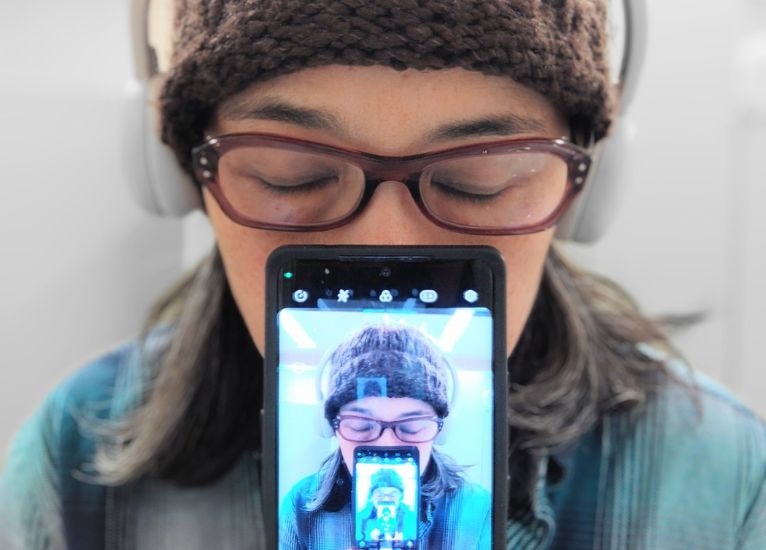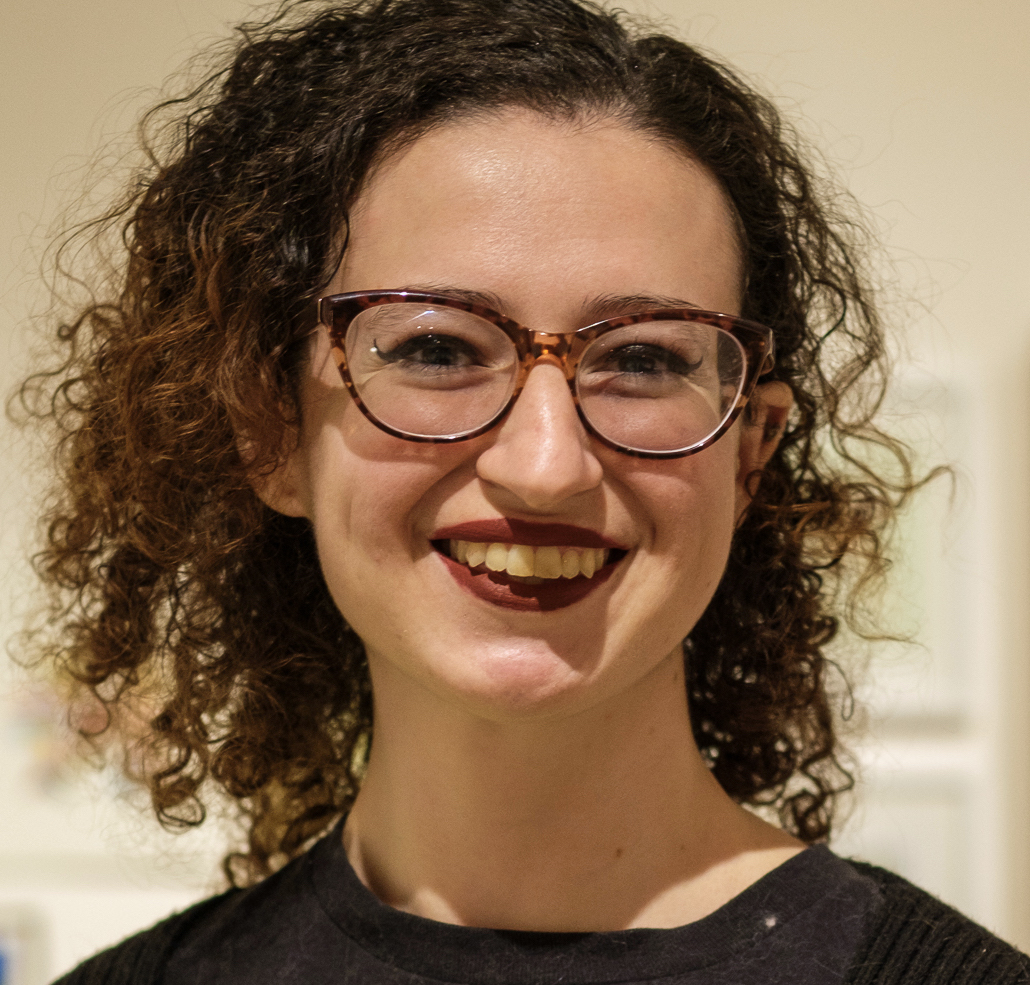Fun at FOLDA: Exploring the Festival of Live Digital Art 2024, Part Two

This review has been written as an experience piece due to the atypical nature of ‘SmartSmart’. Please note the show is detailed from beginning to end in this article.
The cardinal rules of theatre: sit still, don’t chitchat, and make sure your phone is on silent and put away. Adrienne Wong chooses to challenge these conventions, exploring our relationships with our devices through audience participation.
The 2024 Festival of Live Digital Art (FOLDA), produced by SpiderWebShowPerformance, took place from June 13-15. In this section (catch Part One here!), I take a deep dive into SmartSmart, an interactive performance by Adrienne Wong that was staged at the Isabel Bader Centre for the Performing Arts. In my previous review of FOLDA 2024, I mentioned that the festival promotes innovation, creativity, and reflection, and SmartSmart very much embodies these values.
Wong’s SmartSmart calls on audiences to do the forbidden, and take their phones out in the theatre. With active audience participation and a modular script improvised based on audience interaction, this show challenges the conventions of theatrical performance to explore our relationships to our devices. The unconventional nature of the show is evident right away with the arrangement of the “set” and the “seats.” Long tables are arranged for groups of people to sit around, with Wong herself standing in the middle—“onstage”— and a smaller table behind her equipped with what turned out to be a structure for everyone’s phones to “sit” as if an audience in the theatre. Several tables are set up with devices like a Google Home, Amazon Echo, and Apple’s HomePod.
Wong begins with directing audience members to take out their phones, if not already, open their browser and go to native-land.ca. From there, she shows us Kingston, Ontario and tells us about the Crawford Purchase, 1783, the “treaty” (not recorded or written down) that encompasses Kingston. While this is definitely a worthy and important way to begin, the topic changes very abruptly.
Wong greets the devices and invites them to speak to each other (“Alexa, is Siri your friend?”), and asks the crowd if we use these devices, and what for (one ingenious person used their Home device to crate-train a new puppy). The show turns to speaking about the colonialist implications of certain items, like coffee, and then reaches the history of smartphones. This was a very apt reflection, but not one that continued much throughout the show, however Wong suggests that the best response to the complicated history of our phones’ creation is to use them intentionally, such as making art with them, and we did just that.
The audience is invited to install the SmartSmart app (which was also available to download before the show) on their phones, which was somewhat more complicated for iPhone users for reasons which I, an Android user, am still unsure of, but it ended up working for everyone. After a brief warm-up (word association games around each table), we put our hands on our phones and closed our eyes, breathed deeply, and repeated after Wong about how we use our phones all the time but never listen to them—after repeating these phrases, we instinctively blurted out our own phone’s name (mine turned out to be Bernard).
Wong gave us her personal phone number, and had each of us text her (a somewhat difficult feat for folks whose phones didn’t have reception in the theatre) and fill in the blanks of the following: “What is ____” (answer with a thing that your phone does, or something on the phone), and “It is ____” (answer with an abstract noun). I texted, “What is the weather network,” followed by, “It is the dichotomy of good and evil.”
Each table also had some craft supplies in the middle (most of which were housed in former cookie tins), and we were given twenty minutes to dress our newly-named phones (while leaving the camera and screen free for use). For the occasion, Bernard donned a trio of feathers in varied shades of pink, and a swath of hot pink lamé.
During this crafting time, everyone received text messages (our numbers having been acquired through texting Wong earlier), inviting them to call a certain phone number. When called, the recording prompted us to select the number one or two. From there, people were presumably prompted to leave a voicemail making certain sounds or answering a prompt. Yours truly misheard the initial recording and pressed seven, with no result. Calling the number again didn’t activate the recording a second time, so unfortunately I didn’t participate adequately in this section, which was ultimately optional anyhow.
After decorating our phones, they were ready to take their seats in the smartphone theatre. In the SmartSmart app, we directed the phone to record video, and set them up in the seats, before exiting the human-sized theatre and milling around the lobby. This intermission could have been 10, 20, 30, or 40 minutes—without a phone, my sense of time was totally awry and I was forced to enjoy the beautiful views looking out from the Isabel Bader onto the water. Despite anxiously feeling like I had no idea what to do with my hands and frantically wanting to text a friend to save me from my solitude, this was a (begrudgingly) welcome respite from notifications.
When we were invited back in, we did not retrieve our phones right away, instead sitting down at our tables again while the phones remained in their theatre seats. An auditory show began that had been made by, surprisingly, the participants. While we were in the lobby, the tech crew was busy compiling the audio from the voicemails the audience members were prompted to leave, and we listened to the audio composed of different layers of the messages into music. Next, Wong began reading a series of statements from her phone, which turned out to be our submitted text messages in jumbled order. This recitation marked the end of the live part of the performance, and we retrieved our phones on the way out.
However, this was not the end of the show altogether. Our phones had, of course, recorded video while we were in the lobby. By navigating to the “Post Show” section of the SmartSmart app, we could view a video of Wong speaking to the phones in their “seats.” She reflects on the phone as a “transitional technology,” and posits that we’re connected by the way we’re worried about the future, just as phones and the internet connect us. Another, perhaps more valuable way of connecting, is offline—such as in a lobby without one’s phone. This monologue was by far the most poignant part of the show, which was interesting because in some ways it was the most conventional (being a monologue), and in other ways it was exemplary of the show’s unconventionality (a recorded message on the audience’s phones). However, it may have been missed by many people who didn’t see this option in the app or think to look for the recording later.
Given the “modular script” and improvisation, it would be interesting to compare different performances to see how they differ and perhaps change their meaning in the show. The performance was also live-streamed, and the audiences tuning in remotely had different activities and prompts to work on, which might again change the meaning from the in-person performances.
The show was gleefully irreverent to all conventions of being a good audience member—for example, aside from the necessary injunction to keep one’s phone out for the performance, audience members were encouraged to unwrap and crunch on snacks, with Wong handing out crinkly candies. Although not exactly a typical one-woman show, Wong led and facilitated the activities and gave several monologues to prompt reflection from the audience. She has a great welcoming and encouraging energy, with a lot of thoughtfulness towards the relationships we have with our phones and other devices. I felt that there may have been more of an argument or conclusion to these relationships, which was left somewhat ambiguous (especially if audience members did not view the “Post Show” recording). Overall, it was a unique experience that challenged our expectations of performance and the way we look at our phones.
‘SmartSmart’ took place on June 14 as part of FOLDA 2024. More information can be found here.
